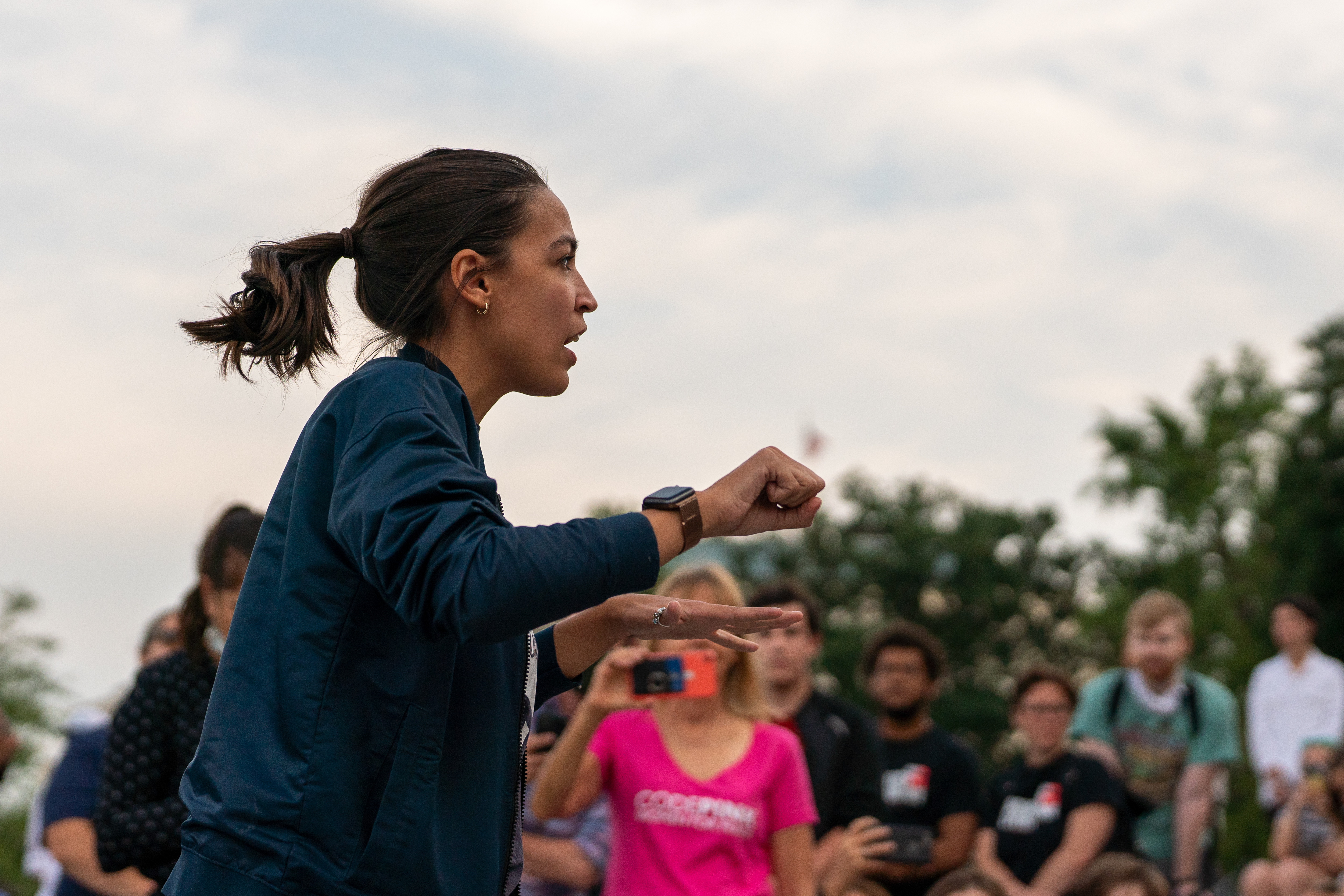6.6: Special Topics in Chicanx and Latinx Studies
- Last updated
- Save as PDF
- Page ID
- 143317
- Mario Alberto Viveros Espinoza-Kulick & Ulysses Acevedo
Chicanx and Latinx Healthcare Perspectives
There is much health and healing of body, mind, and spirit to do given our Chicanx and Latinx history of genocide, colonization, violence, acculturation, sterilization, hazardous working conditions, environmental toxins, diabetes, intergeneration trauma, abuses, and more. Views of health are shaped by one's culture, and culture is informed by nationality, ethnicity, class, gender, sexuality, language, and dis/ability (Chabram-Dernersesian and de la Torre, 2008; de la Torre and Estrada, 2015; Flores, 2013; Borunda and Moreno, 2022). At the same time, health access and health resources are historically and negatively impacted by a history of anti-Indianness, racism, classism, undocumented status, and region (Viruell-Fuentes, Miranda, and Abdulrahim, 2012). The implications of wealth, or net worth (what you own minus what you owe) by race and ownership of housing, and neighborhood income are apparent in the health inequality and lack of access to health care. You often see better health facilities and well-trained doctors, and fully staffed medical facilities in more affluent communities compared to poor ones. For this reason, the emergence of community-based clinics has been critical to racialized ethnic communities, especially in California Chicanx Latinx communities (De la Rocha, Bonta, and Garcia, 2019).
Think about your own experience with health and healing and that of your parents and grandparents. Where have they received most of their health and healing information? Both institutional and traditional health care are key to our communities. Institutional health care has to do with health care provided by hospitals and with doctors, physicians, prescribed medications, surgical procedures, and psychiatric appointments, which typically involve insurance. Traditional health has to do with Indigenous ways of health and healing of cuerpo y alma (body and soul) mediated through curanderas/os (healers) or other specialists, like parteras (midwifes) and involves remedios (medicinal herbs), ceremonies, limpias (spiritual cleansings), sobaras/os (message), huezera/o (bone setter), informal counseling for bilis (rage), susto (fright), or envido (envy), ancestral foodways, and referrals to medical doctors if needed (Avila and Parker, 2000; Flores, 2013; McNeill and Cervantes, 2011; Perrone, Stockel, and Krueger, 1989; Tello, 2019). Traditional health care has been in existence since before colonization and requires skilled and experienced healers.
Traditional Health Practices and Perspectives
Traditional remedios or medicinal herbs and ancestral foodways for the people connected to land have been impacted by invasion and colonization by the Spanish and European Americans ranging from 500 years ago to 150 years ago, depending on the region in this hemisphere (Rodríguez, 2013; Facio and Lara, 2014; Kimmerer, 2015; McNeill and Cervantes, 2011; Medina and Gonzales, 2019; Torres and Miranda, 2017). When people are de-terroritorialized or displaced, they lose their land and access to remedios (medicine) and ancestral foodways. When you lack access to ancestral food, there is a shift to more processed foods with sugars leading to an increase in diabetes and other related health conditions. Diabetes, in some cases, is caused by the experience of being torn from ancestral food and shifting into colonial foodways. In addition, assimilation has been detrimental to the health and healing of Chicanx Latinx communities. The longer the generations of Chicanx Latinx are in the United States, the higher the rates of diabetes, obesity, suicide, and drug and substance abuse. In some contexts, researchers have observed a pattern that can be described as the Latino Health Paradox. This means that immigrant Mexican and Latinx people will report better health and longer life expectancy compared to their acculturated Mexican origin and Latinx counterparts and European Americans of higher class statuses. Despite experiencing discrimination and institutional exclusion, which are typically risk factors that exacerbate bad health, recent migrants can carry forward strong traditions of resilience and well-being. Traditional diet and lifestyle play a major role in the Latino Health Paradox theory. Fewer years of processed foods, more walking, and less drug and substance abuse by immigrants make a difference in everyday health and overall longevity.
In recent years, with an alarming rate of cancer and research on the connection between our gut and minds, there’s been an attempt to move away from processed foods and move towards decolonizing diets and cultivating gardens (Calvo and Esquibel, 2015; Peña, 2017). This means moving towards the use of ancestral foodways, which includes Meso American (Anaucan) super foods like corn, beans, squash, nopales (cactus), chiles, amaranth, and chia. This has meant regarding food as an essential part of health and healing rather than consumption. Chicanx and Latinx communities often have few stores and market sales of fresh items compared to alcohol and processed foods within approximate distance to homes. These impact Chicanx and Latinx farmworker families who work in the food industry and provide sustenance for communities around the globe. In addition, the lack of clean and safe water and toxic pollutants used on crops compounds health issues and avoidable illnesses. The impacts of contemporary food systems on our bodies, minds, and spirit have been detrimental. Historically groups like the United Farmworkers, American Indian Movement, Black Panther Party, and the South Central Los Angeles Farm have raised awareness about this reality concerning food access and insecurity in Chicanx, Latinx, and Black, Indigenous, and People of Color (BIPOC) communities. Food is ultimately important to forming healthy families and communities. In response, more and more farmers' markets are emerging in low-income working-class communities, aided by the ability to accept EBT payments (food stamps).
Traditional health through an Indigenous framework acknowledges the connection and health between body, mind, and spirit. This creates space for more diverse understandings of how healthy bodies can look, including fat bodies. Oftentimes, traditional food and food cultures of people of color are characterized as unhealthy, without regard to their place in spiritual, physical, and social processes.
Political Representation of Latinx and Hispanic People
Political representation of Latinx communities creates opportunities to advocate for better policies and new reforms. In the U.S., trailblazing leaders have crossed barriers for Chicanx and Latinx communities, opening new doors for others to continue the work of equity and justice for all. However, Latinx people remain under-represented in nearly all aspects of government and politics. In 2018, Latinx people were only 1% of all local and federal elected officials, according to the NALEO Educational Fund (2021). In 2022, that number is similar, with only four U.S. Senators and 40 U.S. Representatives. Women are underrepresented among Latinx elected officials, being only 1 Senator and 12 House Representatives. On the website from Rutgers University, you can explore more statistics about women of color in politics and elected positions.
Some of the leaders for Latinx communities in politics include the U.S. Congressperson Romualdo Pacheco, who was first elected in 1879 as a Representative from California. Pacheco had previously served as the first Mexican American governor of California in 1875. Even in states that include a high number of Latinx people and voters, such as California, researchers have identified a pattern of underrepresentation, including in appointed and elected positions in state government, county supervisors, school board members, and city-level positions. Groups like the California Latino School Boards Association have emerged to address some of these specific issues of representation and political power. You can learn more about the California Latino School Boards Association on their website.
At the federal level, the Congressional Hispanic Caucus represents the interests of Hispanic Congresspeople and it includes over 30 members, including many Latinx representatives and their allies. Some Latinx Congresspeople are not members of the Caucus, in part due to partisan divides between Republicans and Democrats. In the Senate, U.S. Senator Octaviano Larrazlo from New Mexico was the first Latino and Mexican American Senator in 1928. Despite gains for representation won in states with high proportions of Latinx people, it took decades of additional advocacy before major federal and judicial positions were held by Latinos. For example, there has never been a Latinx President of the United States, Vice President, or Secretary of State. It was not until 1988 that Lauro Cazavos became the Secretary of Education and the first Latinx or Hispanic person to serve in the U.S. Cabinet. On the U.S. Supreme Court, when Justice Sonia Sotomayor was confirmed to her position in 2009, she became the first Latinx person and the third woman to be confirmed to the Supreme Court. In Figure \(\PageIndex{1}\), there is a photo of Justice Sotomayor fulfilling one of her duties on the Supreme Court by swearing in Kamala Harris as Vice President, who is another woman who broke barriers as the first Black person, first Asian person, first multiracial person, and first woman to serve as Vice President of the United States.

Sidebar: Alexandria Ocasio-Cortez
Representative Alexandria Ocasio-Cortez, popularly known as AOC, has been a major figure for Latinx representation in politics. This is in part because she actively embraces her connection to the Latinx community, foregrounding her status as a young Latina woman living in New York City, who recently paid the bills by bartending. Her continued and unapologetic presentation of herself positions her as a capable and strong advocate for diverse people living in the United States, including immigrants, women, and people of color. In Figure \(\PageIndex{2}\), she appears in a photograph, speaking passionately in front of a crowd of people.

Her passion and tenacity represent a commitment to social change and a critical lens that is relatable for many Latinx people as well as her wide range of supporters.
Politics and Liberation
Some members of Latinx communities are disengaged from formal political processes, including voting and representation. This is in part due to the exclusion of immigrants from voting, which prevents families from engaging in a shared practice of voting and being represented. Beyond that, many Latinx people also share the critical perspective that the U.S. government itself and U.S. society are built around principles of division, exclusion, and exploitation and must be critically examined and transformed. Under this view, participation in the system only serves to encourage people to believe in the possibility of reform, while ultimately failing to address the root causes of racism, xenophobia, and intersectional oppression. Among Native American and Latinx Indigenous peoples, this sentiment can be accompanied by a commitment to tribal sovereignty and the creation of modern systems rooted in traditional and sacred relationships with the land.

The contradictions of political representation can also be seen in Puerto Rico, which is a U.S. territory. Although the people of Puerto Rico bear many of the responsibilities of U.S. citizenship, including paying taxes, being drafted, and following the laws created by the government, they are not politically represented at the federal level. You can see a Puerto Rican flag hanging in Old San Juan in Figure \(\PageIndex{3}\), showing the people’s pride in their island. More recently, this lack of representation has had devastating effects in the face of increased hurricanes in the region and the larger dynamics of climate change. While Puerto Ricans are clearly not represented equally in the U.S. governmental system, the people of the island remain persistently divided as to whether to pursue statehood or independence. This shows the complexity of political perspectives present among communities. Diversity of perspective within Latinx communities and in solidarity with other racial and ethnic groups ultimately contributes to the use of multiple strategies in advocacy and politics. This creates opportunities for future generations to continue the struggle and find new solutions to long-standing systems of white supremacy, xenophobia, and settler colonialism.
Content from this section is drawn from the CC BY-NC-SA 4.0 sources:
Espinoza-Kulick, M. A. V. 2022. “Chicanx and Latinx Social Movement Activity.” Chapter 7 in New Directions for Chicanx and Latinx Studies. OER: LibreTexts.
Espinoza-Kulick, M. A. V., & M. Moreno. 2022. “Chicanx and Latinx Health.” Chapter 9 in New Directions for Chicanx and Latinx Studies. OER: LibreTexts.

